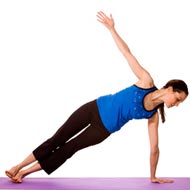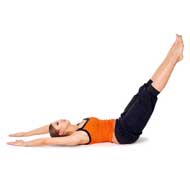- Raja yoga
- Yoga Stretches
- Jivamukti Yoga Poses
- Yoga Tree Pose
- Sun and Moon Yoga
- Wind Removing Pose
- Hare Pose
- Accomplished Pose
- Urdhva Mukha Pinch Mayurasana
- Revolved Abdomen Pose
- Raised Foot Pose
- Scorpion Pose
- Butterfly Pose
- Half Tortoise Pose
- Revolved Twist
- Balancing Stick Pose
- Cat Pose
- Supported Shoulderstand
- Crane Pose
- Handstand
- Happy Baby Pose
- Firefly Pose
- Scale Pose
- Upward Facing Two-Foot Staff Pose
- Reclining Big Toe Pose
- Stick Pose
- Revolved Head-to-Knee Pose
- Full Boat Pose
- Upward Extended Feet Pose
- Yoga arm balance poses
- Core Yoga
- Inversion Yoga Poses
- Seated And Twist Yoga
- Horse Pose
- Cobbler Pose
- Seated Wide Angle Pose
- The Compass Pose
- Half Crow Pose
- Bound Half Moon Pose
- Lotus Pose
- Reverse Warrior Pose
- Fixed Firm Pose
- Back-bend Poses
- Forward bend Poses
- Sarvangasana
- Ashtanga Yoga Poses
- Warm up poses
- Seated Poses
- Seated Forward Bends
- Chair Poses
- Standing Poses
- Standing Balancing poses
- Yoga Asanas
- Hatha Yoga Asanas
- Yoga Postures Online
- Partner Yoga Poses
- Anusara Yoga Poses
- Advanced Yoga poses
- Restorative Yoga Poses
- Kids Yoga Poses
- Beginning Yoga Postures
Side Plank Pose (Vasisthasana)
Side Plank Pose (Vasisthasana) is a powerful yoga exercise or asana that aims at enhancing your arm balance.
The Sanskrit term “Vasisth” refers to “best or most excellent sage.” As the level of excellence is an attribute of many sages, the Side Plank Pose is also referred to as the Sage Pose.
This pose leaves your mind calm and devoid of stress as well as builds up strength in your arm and shoulders. It is also commonly referred to as the One Arm Balance posture, where your body is balanced on one arm at 45 degrees to the ground.
The Vasisthasana (Side Plank Pose) is a powerful exercise to develop arm and inner strength, and you need to be cautious while performing this yoga posture. Side Plank Pose tips can be remembered while you do this yoga exercise. Ensure that all the pars of your body are in perfect alignment while you perform this asana. Place your foot one over the other as it is done in Mountain pose or Tadasana. You can understand how the weight of your body gets distributed by planting your feet firmly against the surface of a wall and feeling the pull.
In the Side Plank Pose advanced stages, you can perform the complete form of this pose. First bend your knee and bring it close to your chest. Now catch hold of your big toe with your thumb and two fingers. Inhale as you gradually stretch out your leg upward. You can find your leg at 90 degree with the floor at a certain point of time. Remain in this position for a while and then return to your original position. You can then repeat the same steps using your other foot.
Steps :
- Get into the Adho Mukha Svanasana or Downward Facing Dog Pose. Place your right foot on top of your left foot. Place your hand on your hip and turn your body accordingly. You will now be supporting the weight of your body on your foot and hand on the left.
- Place the hand that supports your body a little ahead of your shoulders so that it is done in a slight angle from the floor. Keep your arm straight with the palm pressed firmly on the ground.
- Now tighten your thighs and apply weight on the floor through the heels of your legs. Your whole body is now in a diagonal alignment with the floor.
- You can also raise your right hand upward and remain in this balanced position for a while.
- Return to the Downward Facing Dog pose again and perform the same exercise on your right side.
- When complete, move into the Balasana (Child Pose).
Precautions :
- Side Plank Pose or Vasisthasana is a powerful yoga exercise that can be done in varying levels of intensity.
- Hence, you need to be physically fit to perform this asana.
- Side Plank Pose precautions need to be exercised in case you are suffering from or recovering from an injury in your neck, shoulders, or ankles.
- These are the parts of your body that need to take up the weight of your frame and hence, avoid this pose if you sustain an injury.
Beginner’s Tip :
Side Plank Pose is an advanced pose in yoga, and hence, a beginner can find it difficult to master. A good beginner’s tip for the Side Plank Pose is to try to do this pose using the wall as a support. While performing Adho Mukha Svanasana or Downward Facing Dog pose, you could also bend your legs for better support. You can also modify this pose by using your forearm as a support on the floor.
Benefit To Body Part :
- This pose greatly improves the balance of your body.
- Your muscles get toned up well.
- The back of your legs and wrists get a good stretch.
- Your inner core strength is also greatly enhanced.
Therapeutic Applications :
- Side Plank Pose focuses on improving concentration and hence, combats any depression or fear. It is thus widely used to deal with anxiety and depression.
- The Side Plank Pose greatly improves core body strength and is helpful in improving balance and coordination.
Variations :
- Use the wall as a support and do the exercise.
- Slightly bend your knees toward the floor to achieve a greater sense of balance.
- You could also rest your forearm on the ground and use it as support, unlike the advanced version where your hand should be perpendicular to the ground.
Preparatory Poses :
- Downward Facing Dog Pose (Adho Mukha Svanasana), which is the initial phase that you need to get into before you support your body in a diagonal alignment.
- Plank Pose, which is similar to the top of a push up and gives you greater balance.
- Wide Legged Forward Bend (Prasarita Padottanasana), which gives your legs a good stretch as well as gives strength to your backbone.
- Reclining Big Toe Pose (Sputa Padangustasana), which lends a good stretch to your hips, calves, and thighs, and adds strength to your knees.
- Reclining Hero Pose (Sputa Virasana), which provides a good stretch to your abdomen and thighs, and increases the strength of the arches of your body.
Follow Up Poses :
- Extended Side Angle Pose (Utthita Parsvakonasana) gives strength to your legs and ankles. It also provides a good stretch from your shoulders to your waist.
- Extended Triangle Pose (Utthita Trikonasana) gives strength to your body by providing a good stretch to your ankles, thighs, and feet. The abdominal organs are also stimulated well.



